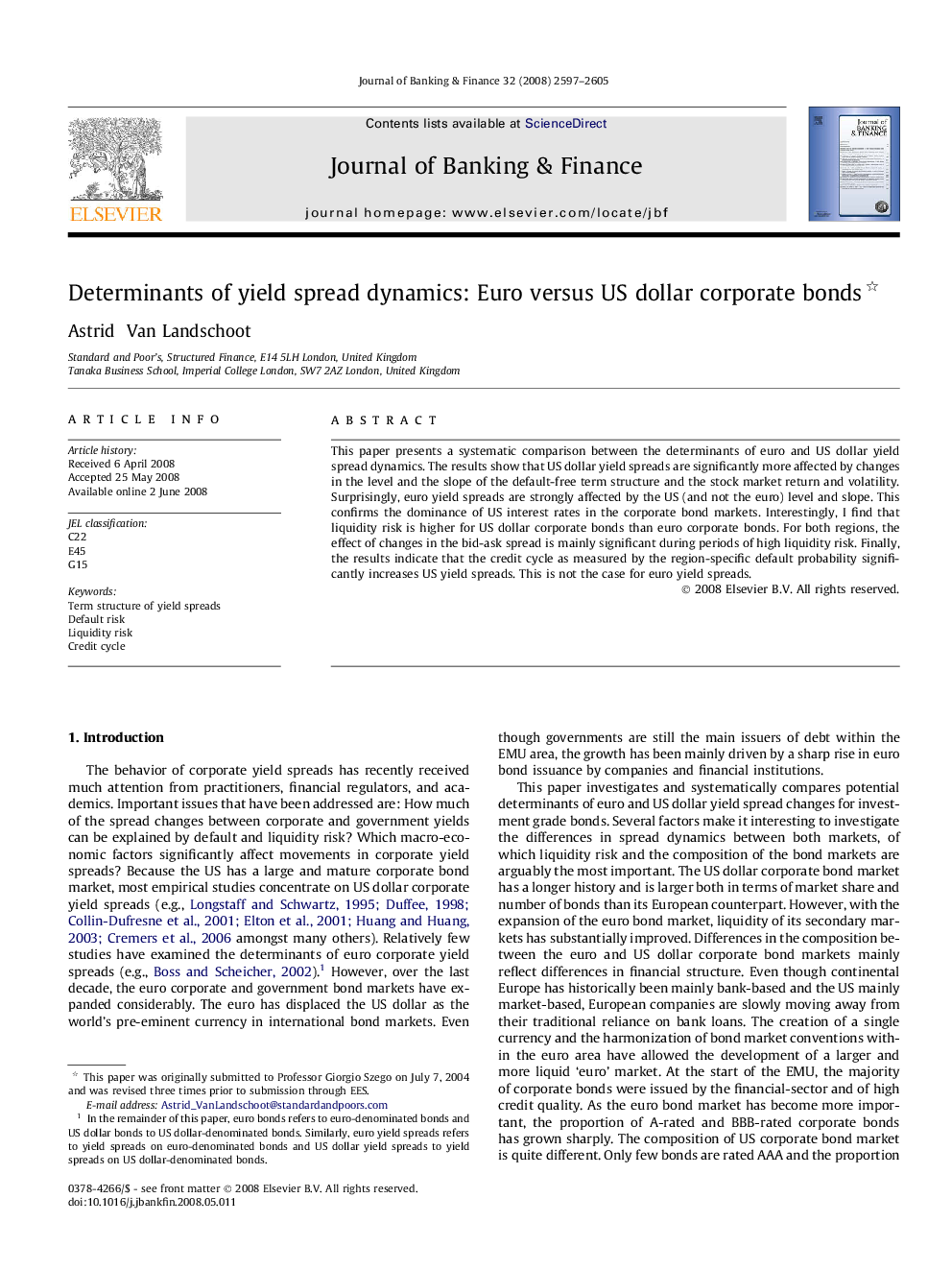| Article ID | Journal | Published Year | Pages | File Type |
|---|---|---|---|---|
| 5090661 | Journal of Banking & Finance | 2008 | 9 Pages |
Abstract
This paper presents a systematic comparison between the determinants of euro and US dollar yield spread dynamics. The results show that US dollar yield spreads are significantly more affected by changes in the level and the slope of the default-free term structure and the stock market return and volatility. Surprisingly, euro yield spreads are strongly affected by the US (and not the euro) level and slope. This confirms the dominance of US interest rates in the corporate bond markets. Interestingly, I find that liquidity risk is higher for US dollar corporate bonds than euro corporate bonds. For both regions, the effect of changes in the bid-ask spread is mainly significant during periods of high liquidity risk. Finally, the results indicate that the credit cycle as measured by the region-specific default probability significantly increases US yield spreads. This is not the case for euro yield spreads.
Related Topics
Social Sciences and Humanities
Economics, Econometrics and Finance
Economics and Econometrics
Authors
Astrid Van Landschoot,
